The Music is Still There
 When the world shut down in March of 2020, for a while live music stopped, too. Those who were in the business of making music for a living no
longer had an audience to play for, an orchestra to play in or to conduct, a Broadway Musical or a church to sing in, a concert tour to go on, performers to write music for.
When the world shut down in March of 2020, for a while live music stopped, too. Those who were in the business of making music for a living no
longer had an audience to play for, an orchestra to play in or to conduct, a Broadway Musical or a church to sing in, a concert tour to go on, performers to write music for.
Two good friends of mine were profoundly affected. One tutors vocal students and sings in the Tabernacle Choir. The other one is the accompanist for the other’s students and for the LDS Ward Choir that I direct on a volunteer basis. Both of my friends lamented that “Music is who I am, and now I have nothing.” During the pandemic, we appreciated the talents of all musicians more than we had before. But how much does the average person know about the music stored in our brains and how long will we “have it” until our brain function stops completely?
Singing with Margaret
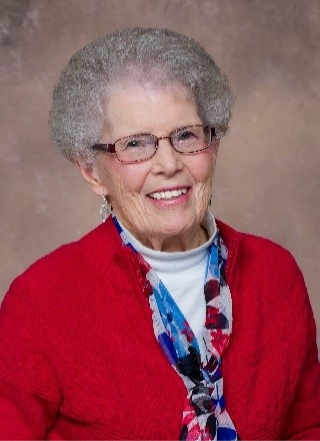 Although I’d heard accounts of how people with Alzheimer’s had a miraculous restoration
of memories, speech and even movement when given the chance to listen to familiar
music from their past, I knew very little about the science behind those temporary
breakthroughs. I did have one personal experience that touched me deeply and made
me want to learn more.
Although I’d heard accounts of how people with Alzheimer’s had a miraculous restoration
of memories, speech and even movement when given the chance to listen to familiar
music from their past, I knew very little about the science behind those temporary
breakthroughs. I did have one personal experience that touched me deeply and made
me want to learn more.
While sitting at the bedside of my 93-year-old friend who was dying and hadn’t spoken for more than a day, I took her hand and began talking about the experiences we’d had leading music for our church congregation. With her eyes still shut, she said softly, “I miss the hymns.” I began singing familiar hymns and was joined by her hospice nurse. Soon Margaret was singing phrases of the music with us. She couldn’t remember all the words, so she lamented, “I can’t sing anymore.” With tears rolling down my cheeks, I said, “Margaret you are singing! Keep singing with us.” Accompanied by recorded hymns on the nurse’s phone, we sang together for about 20 minutes, until Margaret drifted off again. Even though she couldn’t talk, Margaret’s music was still “Alive Inside.”
A Catalyst: Alive Inside: The Story of Music and Memory I’d seen the documentary “Alive Inside: The Story of Music and Memory.”
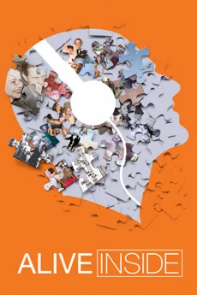
I’d seen the documentary “Alive Inside: The Story of Music and Memory.” Released in 2014, it won awards at the Sundance Film Festival. It documents the dramatic results of the Music & Memory℠ program, created by Dan Cohen. Using personalized playlists of favorite songs loaded on iPODs, this and similar programs continue to be refined, successfully reawakening memory and even speech, at least temporarily, in people suffering with Alzheimer’s and other cognitive and physical disabilities.
Released in 2014, it won awards at the Sundance Film Festival. It documents the dramatic results of the Music & Memory℠ program, created by Dan Cohen. Using personalized playlists of favorite songs loaded on iPODs, this and similar programs continue to be refined, successfully reawakening memory and even speech, at least temporarily, in people suffering with Alzheimer’s and other cognitive and physical disabilities.
On the heels of this award-winning Sundance film, under the direction of the governor’s Utah Commission on Aging, The Music & Memory℠ Utah Coalition was formed in spring 2014. The Coalition brings together the state’s leading healthcare, business, non-profit and educational leaders in a groundbreaking partnership, with the mission to roll-out Music & Memory℠ to all nursing homes statewide and make the program available to all individuals living with dementia.
In the past decade, there have been many more developments in music therapy and in understanding why and how familiar music is able to awaken parts of the brain that were previously thought to be non-functional. Music therapy’s benefits for those with various forms of dementia and even Parkinson’s disease have proved beneficial to the point where, in some cases, it is covered by insurance when administered by a Board-Certified (MT-BC) music therapist.
Part of My Journey to Writing about Music Therapy
 During that first year of COVID-19, the symptoms of my husband’s Alzheimer’s disease
steadily got worse. I began researching ways to keep him occupied as it became increasingly
difficult for him to read, write on his computer and even to operate the remote control
on the television. I wish I’d known about the Gleeful Choir, a chorus for persons with dementia and their caregivers, led by Emily Christensen*
and supported by Jewish Family Service. Dennis loved to sing and had been a member
of the Utah Symphony Chorus for years. I know the music was still alive inside of
him. I just didn’t know how to “use music as a specific intervention” or what resources
were available to me.
During that first year of COVID-19, the symptoms of my husband’s Alzheimer’s disease
steadily got worse. I began researching ways to keep him occupied as it became increasingly
difficult for him to read, write on his computer and even to operate the remote control
on the television. I wish I’d known about the Gleeful Choir, a chorus for persons with dementia and their caregivers, led by Emily Christensen*
and supported by Jewish Family Service. Dennis loved to sing and had been a member
of the Utah Symphony Chorus for years. I know the music was still alive inside of
him. I just didn’t know how to “use music as a specific intervention” or what resources
were available to me.
Over the past years, there have been a flood of articles, streaming lectures, podcasts, news reports and even movies about memory and music and the board-certified profession of Music Therapist. A very enjoyable and accessible tool I found to learn more about how music is stored in and affects the brain is to listen to therapist Emily Christensen’s UGEC (Utah Geriatric Education Consortium) Fireside Chat, titled “Music, Your Partner in Caregiving.”
How to Find a Music Therapist
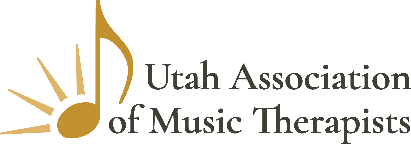 Is there someone in your care that would benefit from the power of personalized music
therapy? The best resource for finding a Utah board-certified music therapist is http:/uamt.org,
the site for the Utah Association of Music Therapists. Their directory contains the
locations of Utah therapists, the populations they work with, their qualifications
and contact information.
Is there someone in your care that would benefit from the power of personalized music
therapy? The best resource for finding a Utah board-certified music therapist is http:/uamt.org,
the site for the Utah Association of Music Therapists. Their directory contains the
locations of Utah therapists, the populations they work with, their qualifications
and contact information.
Aids to Using Playlists at Home
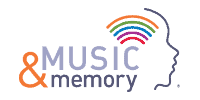 There is knowledge and skill involved in using playlists successfully, For detailed
research and basic information on music listening programs, click on the AMTA’s Guidelines for Music Listening Programs. For a shortened version check out their Jan. 2014 Press Release: Setting the Record Straight: What Music therapy Is and Is Not.
There is knowledge and skill involved in using playlists successfully, For detailed
research and basic information on music listening programs, click on the AMTA’s Guidelines for Music Listening Programs. For a shortened version check out their Jan. 2014 Press Release: Setting the Record Straight: What Music therapy Is and Is Not.
The Arts and Aging section of the UtahAging.org website is one of the most complete resources for caregiving and a variety of the arts. A wealth of information for caregivers is in the "Health Challenges" section under Arts & Aging.
One More Example: Tony Bennett and Lady Gaga
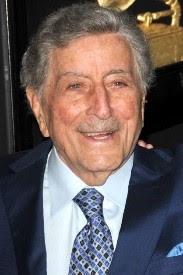 Tony Bennett has been quite open about his struggles with Alzheimer’s. Perhaps you
saw the 2021 TV documentary special, One Last time, where Bennett and his good friend Lady Gaga were able to perform whole sets of his
music all from memory, a memory with so many challenges that Bennett hadn’t said her
name for a long time—until he walked out on to the stage and saw her waiting there
for him. She could hardly control her tears. His music was still there, and it triggered
the memory of her name, too.
Tony Bennett has been quite open about his struggles with Alzheimer’s. Perhaps you
saw the 2021 TV documentary special, One Last time, where Bennett and his good friend Lady Gaga were able to perform whole sets of his
music all from memory, a memory with so many challenges that Bennett hadn’t said her
name for a long time—until he walked out on to the stage and saw her waiting there
for him. She could hardly control her tears. His music was still there, and it triggered
the memory of her name, too.
*Emily Christensen is a board-certified music therapist and director of Crescendo Music Therapy. She is listed under Resource Specialists on the UtahAging.org website
